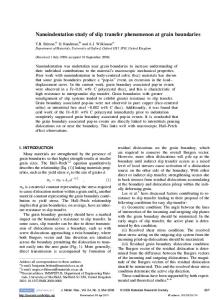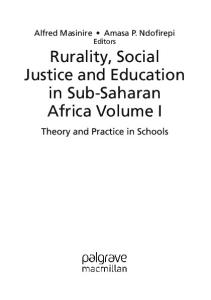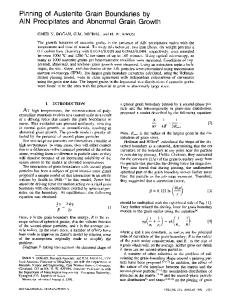What types of grain boundaries can be passed through by persistent slip bands?
- PDF / 275,419 Bytes
- 4 Pages / 612 x 792 pts (letter) Page_size
- 69 Downloads / 296 Views
G. Wang Shenyang National Laboratory for Materials Science, Institute of Metal Research, Chinese Academy of Sciences, Shenyang, 110016, People’s Republic of China
J. Eckertb) Institut fu¨r Festko¨rper- und Werkstofforschung (IFW) Dresden, Institute for Metallic Materials, P.O. Box 27 00 16, D-01171, Dresden, Germany (Received 2 December 2002; accepted 6 February 2003)
Three typical interactions of persistent slip bands (PSBs) with different types of grain boundaries (GBs) were investigated and analyzed in fatigued copper crystals. The results show that PSBs cannot transfer through all types of large-angle GBs, regardless of their orientation with respect to the stress axis. Secondary slip was often observed near the GBs, leading to strain incompatibility. When the slip systems of the two adjacent crystals are coplanar, the transmission of a PSB across a GB strongly depends on the slip directions of the two adjacent crystals. It was found that only the low-angle GBs can be passed through by PSBs, and accordingly they are insensitive to intergranular fatigue cracking. For a special copper bicrystal with coplanar slip systems, the ladderlike dislocation arrangements within the adjacent PSBs become discontinuous and a dislocation-affected-zone appears near the GB due to the difference in the slip direction of the two adjacent crystals. Therefore, the necessary conditions for the transmission of a PSB across a GB are that the neighboring grains have a coplanar slip system and identical slip directions. Grain boundaries (GBs) often become the barrier to slip activation and block the movement of dislocations during plastic deformation. However, slip bands may pass through some special GBs, and can transport some dislocations across a GB into the adjacent grain. Correspondingly, several criteria for slip transmission mechanisms across a GB have been proposed.1–3 However, all those criteria are based on the observations in metals subjected to uniaxial plastic deformation. The interactions of slip bands with GBs in fatigued metals are relatively complicated and have seldom been reported.4 Since intergranular cracking is one of the important fatigue damage modes in polycrystals, the interactions of slip bands with different GBs often affect the intergranular fatigue cracking process, and furthermore control the a)
Address all correspondence to this author. e-mail: [email protected] Present address: Max-Planck-Institut für Metallforchung, Heisenbergstr. 3, 70569, Stuttgart, Germany. b) This author was an editor of the journal during the review and decision stage. For the JMR policy on review and publication of manuscripts authored by editors, please refer to http:// www.mrs.org/publications/jmr/policy.html. J. Mater. Res., Vol. 18, No. 5, May 2003
http://journals.cambridge.org
Downloaded: 21 Mar 2015
fatigue damage mechanism. In the fatigued copper crystals, persistent slip bands (PSBs) often carry most of the plastic strain and have a special dislocation arrangement with a ladderlike structure.5 The pecul
Data Loading...











